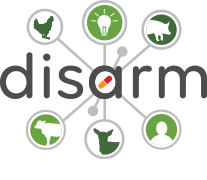336- Quantitative and qualitative analysis of antimicrobial usage patterns in 180 selected farrow-to-finish pig farms from nine European countries (Research paper – Sarrazin – 2018)
Click here for resource
In Significant Impact Groups: Other
Species targeted: Pigs;
Age: Young;
Summary:
Objectives: Farm-level quantification of antimicrobial usage (AMU) in pig farms.
Methods: In a cross-sectional study, AMU data on group treatments administered to a single batch of fattening pigs from birth to slaughter (group treatment data) and antimicrobials purchased during 1 year (purchase data) were collected at 180 pig farms in nine European countries. AMU was quantified using treatment incidence (TI) based on defined (DDDvet) and used (UDDvet) daily doses and defined (DCDvet) and used (UCDvet) course doses.
Results: The majority of antimicrobial group treatments were administered to weaners (69.5% of total TIDDDvet) followed by sucklers (22.5% of total TIDDDvet). AMU varied considerably between farms with a median TIDDDvet of 9.2 and 7.1 for a standardized rearing period of 200 days based on group treatment and purchase data, respectively. In general, UDDvet and UCDvet were higher than DDDvet and DCDvet, respectively, suggesting that either the defined doses were set too low or that group treatments were often dosed too high and/or administered for too long. Extended-spectrum penicillins (31.2%) and polymyxins (24.7%) were the active substances most often used in group treatments, with the majority administered through feed or water (82%). Higher AMU at a young age was associated with higher use in older pigs.
Conclusions: Collecting farm-level AMU data of good quality is challenging and results differ based on how data are collected (group treatment data versus purchase data) and reported (defined versus used daily and course doses).
Where to find the original material: https://pubmed.ncbi.nlm.nih.gov/30544242/; https://doi.org/10.1093/jac/dky503
Country: BE, BG, DK, FR, DE, IT, PL, ES, NL
